Jamie Lyn Callahan of Allegion sent me today’s Wordless Wednesday photos, taken during a kids’ birthday party at a facility for indoor play. While I don’t know all of the details of this facility, I do know that is 9,000 square feet in area and includes an adventure playground and sports fields and courts.
This is a great opportunity to learn about how the codes would impact this door, which currently has two lever handles that have to be turned simultaneously in order to open the door for egress. Scroll down for (a lot!) more info…
Things we don’t know:
- Use Group / Occupancy Classification: We don’t know whether this door is serving a space that is considered an assembly occupancy, a business occupancy, or something else. Code requirements vary according to the use group, so this is important information to have. For example, if this door was serving an assembly occupancy, delayed egress locks would not be permitted by the International Building Code (IBC) or the International Fire Code (IFC). (The NFPA codes might allow a delayed egress lock for this door.)
- Calculated Occupant Load: The occupant load is calculated based on the area of the space and the occupant load factor, which is determined by how the area is used. Among other things, the occupant load affects how many egress doors are required, and may also impact the door hardware. For example, if this door was serving an assembly occupancy with a calculated occupant load of 50 people or more, the I-Codes would require the door to have panic hardware.
- AHJ Approval: We don’t know whether the local code official approved the additional lever handle. Based on the requirements of the codes and standards outlined below, I hope not.
Things we do know:
- Child Safety: From the signage and the fact that the door has two lever handles – one installed very high on the door, the intent is to prevent children from exiting unaccompanied. This is a very common request in schools and other locations where small children or children with special needs may be in danger if they leave the space. In an educational occupancy, the I-Codes would allow a delayed egress lock which sounds an alarm and delays egress for 15 seconds – but only on doors serving classrooms with a calculated occupant load of less than 50 people. The door in the photos is not serving an educational occupancy. If it’s a business occupancy, delayed egress would be an option. If it’s an assembly occupancy, delayed egress would not be permitted by the I-Codes.
- Releasing Motion(s): For doors in almost all locations, the model codes require the door to be unlatched for egress with one releasing motion, such as turning a lever handle or pushing the touchpad of the panic hardware. Two releasing motions are permitted by the model codes for entry doors serving residential dwelling units and sleeping units, and the NFPA codes permit two releasing motions for existing classroom doors (the I-Codes do not permit this). When two releasing motions are permitted by the model codes, those motions must be non-simultaneous, for example, a deadbolt and a lever handle. The door in the photos would not be permitted by the model codes to require two releasing motions, and definitely not two simultaneous releasing motions (both lever handles must be turned at the same time).
- Mounting Height: The model codes and accessibility standards require releasing hardware to be mounted between 34 inches and 48 inches above the floor. This allows the hardware to be operated by all building occupants, including those using a wheelchair. The second latchset on this door is mounted well above the allowable range.
- Special Knowledge and Effort: The model codes require egress hardware that is operable without a key, tool, special knowledge or effort. Although this requirement is somewhat subjective, based on Jamie Lyn’s experience during the party, building occupants did not intuitively know how to open the door. Some needed help to get the door open, and the door was propped open at times for convenience – defeating the intended purpose. The top latchset looks like a privacy set, which if locked from the outside could require a tool for egress.
- Doors Provided for Egress Purposes: The door in the photos was a marked exit, but there were several other egress doors serving the space. One argument for non-compliance with the codes could be that this door is not required for egress. Maybe with the AHJ’s approval the door could be taken out of service and marked “Not an Exit”, with the exit sign removed – I can’t say whether that’s a viable option based on the information I have. But the IBC and IFC state that required egress doors AND DOORS PROVIDED FOR EGRESS PURPOSES must comply with the codes. This means that even if a door is an “extra door” (for example, if the code requires 2 exits and this door is a 3rd), if it’s provided for egress it has to comply. And almost all doors must meet the accessibility requirements (the exceptions are listed in this post).
Possible solutions:
- Exit Alarm: In some locations, signage and an audible alarm are enough to deter use of the door.
- Delayed Egress: If this door is not serving an assembly occupancy, a delayed egress lock might be an option.
- Not an Exit: If the door is not required or provided for egress purposes, maybe the AHJ would allow it to be marked with signage stating that it is not an exit, and therefore would not have to be code-compliant. The accessibility requirements could still be an issue.
- Staff Supervision: When the space is occupied by small / more vulnerable children, an additional staff person could be responsible for monitoring the exit.
I’d love to hear any additional ideas or thoughts from iDigHardware readers! Feel free to leave a comment!
You need to login or register to bookmark/favorite this content.

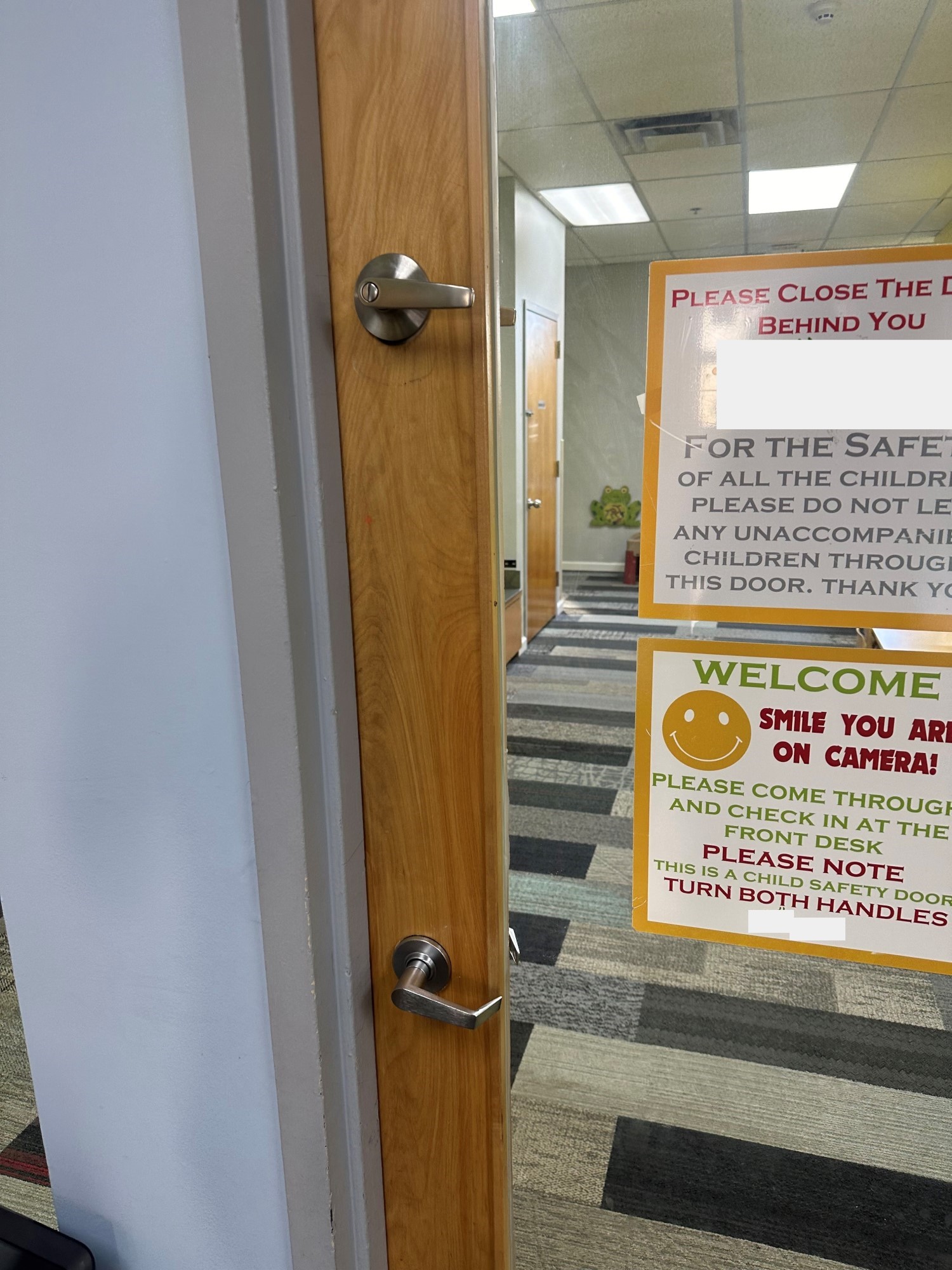
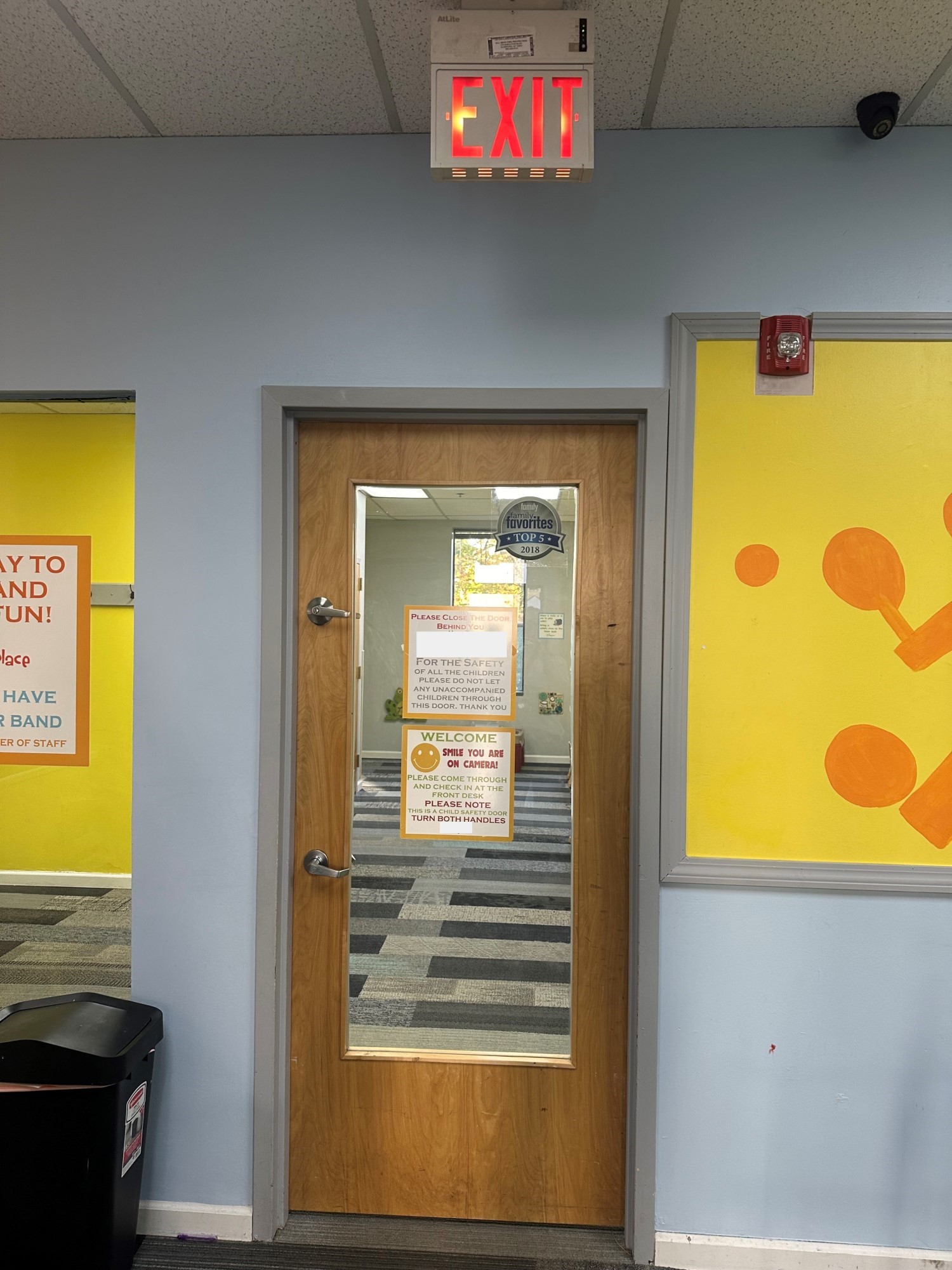
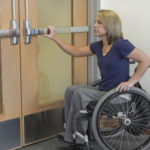
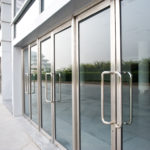



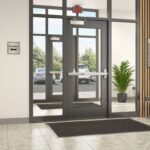



This wouldn’t work even if there was a swimming pool in the room!
You’re right, Lloyd! And for anyone who’s curious, here are the requirements for swimming pools!
https://idighardware.com/2021/04/decoded-door-gate-hardware-for-swimming-pools/
– Lori
Hum
Be interesting to see a floor plan.
I wonder where this door leads to,
You do know it is one operation, to open…. Just have to do it simultaneously.
Hi Charles –
This would definitely be considered two motions, and the accessibility standards require the hardware to be operable with one hand. You would not be able to use this door if you had one hand.
– Lori
Caught
One of my old boss’ used the::
One armed blind man rule, to check if an exit was legal.
I’ve been to many indoor playgrounds, and they tend to use electric-strikes to control access (in one location they used maglock) via an attendant at a desk controlling it. In many locations, they’re just 1m tall gates, rather than a full-door.
I guess this was a quick/easy/cost-effective way to control egress of children, especially if there’s not a supervisor monitoring the door at all times. What they did is kind of ingenious, but definitely not immediately intuitive to operate – and obviously needs to meet the requirements of their AHJ just to be sure that it’s okay to do.
Hi Sean –
I’m sure they are worried about the liability associated with elopement, but there is also liability for non-compliance with the codes and a potential for an ADA complaint.
– Lori